Discover the serene world of watercolor painting, a perfect creative outlet for beginners․ With delicate blends and vibrant results, it offers a meditative journey and endless inspiration․
What is Watercolor Painting?
Watercolor painting is a versatile and expressive art form that uses water-soluble pigments to create vibrant, translucent designs․ Unlike oil or acrylic, watercolor relies on water as its primary medium, allowing for delicate washes and blending․ The technique involves applying pigments to paper, where the water evaporates, leaving behind a durable, light-fast image․ Known for its unpredictability, watercolor requires precision and patience, as mistakes are challenging to correct․ This medium is ideal for capturing soft, ethereal effects and is beloved by artists for its unique ability to balance spontaneity with control․
Why Choose Watercolor for Beginners?
Watercolor painting is an excellent choice for beginners due to its simplicity and versatility․ It requires minimal supplies, making it accessible and portable․ The medium is forgiving, allowing for spontaneous creativity and experimentation․ Watercolor’s transparency and blending capabilities create soft, ethereal effects that inspire artistic expression․ It also dries quickly, enabling rapid progress and immediate feedback; This medium fosters patience and adaptability, essential skills for any artist․ Whether you’re exploring hobby painting or seeking a meditative activity, watercolor offers a rewarding journey for those new to painting․
Basic Supplies Needed for Watercolor
To begin with watercolor painting, you’ll need a few essential supplies․ Start with watercolor paints, available in pans or tubes, and choose between student-grade or professional-quality pigments․ Invest in a set of watercolor brushes in various sizes and shapes for different techniques․ Watercolor paper is crucial—opt for 100% cotton, cold-pressed or hot-pressed sheets․ A plastic palette with built-in wells will help you mix colors․ Add a water cup, a spray bottle, and a paper towel for blending․ Optional tools like masking tape or a spray bottle can enhance your process․ These basics will set you up for a smooth creative experience․
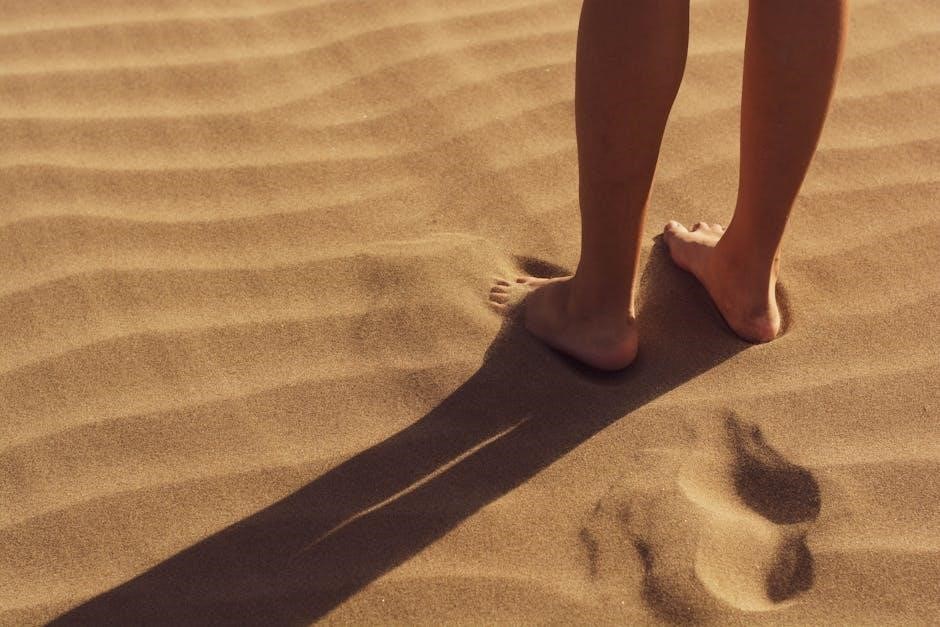
Materials and Tools
Watercolor painting requires essential materials like paints, brushes, paper, and palettes․ Optional tools include masking tape, spray bottles, and texture-enhancing items, ensuring versatility in your creative process․
Essential Watercolor Supplies
Start with high-quality watercolor paints, preferably light-fast for durability․ Invest in a variety of synthetic or natural brushes, ranging from fine details to broad washes․ Use cold-pressed, acid-free watercolor paper for optimal performance․ A porcelain palette with built-in wells is ideal for mixing colors․ Don’t forget water containers, a spray bottle, and paper towels․ Optional tools include masking tape for sharp edges and a hairdryer to speed drying; These supplies form the foundation for a successful watercolor painting experience, ensuring vibrant and lasting results․
Choosing the Right Brushes
Selecting the right brushes is crucial for watercolor painting․ Opt for synthetic or natural fiber brushes, as they hold water and pigment effectively․ Rounds are ideal for details and fine lines, while flats are perfect for broad washes․ Mops are great for soft blending․ Natural hair brushes, like sable, offer excellent water retention, while synthetic brushes are durable and affordable․ Invest in a variety of sizes to cover all techniques․ Proper brush care, such as cleaning and storing, ensures longevity․ The right brush enhances your control and creativity, making it a vital tool in your watercolor journey․
Understanding Watercolor Paper
Watercolor paper is a cornerstone of the medium, available in various weights and textures․ Common weights include 140lb (190gsm) for practice and 300lb (640gsm) for professional work․ Textures range from smooth hot press to rough cold press, each offering unique effects․ Look for acid-free, lignin-free papers to prevent yellowing․ Sizing, either internal or external, enhances durability and water resistance․ Always stretch paper before painting to avoid buckling․ Choosing the right paper ensures better pigment flow and a more enjoyable creative process, making it essential for achieving desired results in your watercolor step-by-step tutorial journey․
Additional Tools for Watercolor
Beyond brushes and paints, several tools enhance your watercolor experience․ A spray bottle helps maintain paper moisture, while a palette knife aids in mixing colors․ Masking fluid protects areas from unwanted pigment, and a blending stump softens edges․ A sharp utility knife trims paper precisely, and a pencil or charcoal sketches compositions․ Tape can create crisp borders, and a hairdryer speeds drying between layers․ These tools expand creative possibilities, allowing for intricate details and unique effects in your step-by-step watercolor journey, making them invaluable for both beginners and seasoned artists alike․
Preparation for Painting
Prepare your space by stretching paper, organizing supplies, and mixing colors․
Ensure safety with gloves and proper ventilation․ Plan your composition for a smooth start․
Stretching and Preparing Watercolor Paper
Properly preparing your watercolor paper is essential for a smooth painting experience․ Start by soaking the paper in water for 10-15 minutes until it becomes pliable․ Gently stretch it on a sturdy board using masking tape to secure all edges․ Allow it to dry completely, ensuring it lies flat․ For added stability, use heavy weights or a spray bottle to maintain tension․ This step prevents buckling and ensures even paint absorption․ Always handle the paper carefully to avoid tears․ Proper preparation sets the foundation for successful watercolor painting․
Setting Up Your Workspace
Creating a well-organized workspace is crucial for a enjoyable watercolor experience․ Begin by choosing a clean, stable surface and ensure good lighting, preferably natural light․ Cover your work area with a protective cloth or plastic to prevent water and paint spills from damaging it․ Arrange your supplies, such as paints, brushes, and water containers, within easy reach․ Keep paper towels or a cloth handy for drying brushes․ Position your palette or mixing tray centrally for easy access․ Finally, ensure your chair and table are at a comfortable height to avoid fatigue during long painting sessions․
Mixing Colors on a Palette
Mixing colors on a palette is a fundamental step in watercolor painting․ Start by arranging your primary colors (red, yellow, blue) evenly around the palette․ To create secondary colors, mix two primaries: orange (red + yellow), green (blue + yellow), and purple (blue + red)․ For softer hues, add water to your pigments․ Experiment with tints by mixing color with white or water, and shades by adding black or dark pigments․ Use the 70-30 rule: 70% of one color and 30% of another for balanced mixes․ Always test your mixtures on scrap paper before applying them to your artwork․
Safety Tips for Watercolor Painting
Ensure a safe and enjoyable watercolor experience by following essential precautions․ Always work in a well-ventilated area to avoid inhaling pigment particles or fumes․ Wear gloves to protect your skin from stains and potential irritation․ Use an apron or old clothing to safeguard against accidental splatters․ Keep water and cleaning supplies nearby to quickly rinse brushes and spills․ Avoid eating or drinking while painting to prevent accidental ingestion of materials․ Store paints and chemicals out of reach of children and pets․ Regularly clean your workspace to maintain organization and safety․ By prioritizing these practices, you can focus on creating art with confidence and peace of mind․
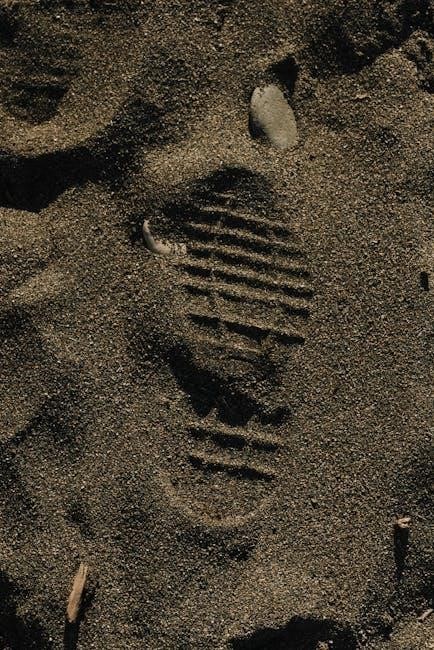
Basic Watercolor Techniques
Master foundational techniques like washes, layering, and blending to achieve vibrant, translucent effects․ Experiment with texture and color theory to enhance your artistic expression and creativity․
Washes: The Foundation of Watercolor
Washes are the cornerstone of watercolor painting, creating smooth, even layers of color․ Start with a flat wash for uniform backgrounds or a graded wash for subtle transitions․ Use light, flowing strokes to apply pigment mixed with water, ensuring even coverage․ For intricate details, layer washes after the base dries․ This technique is ideal for skies, landscapes, and soft textures․ Practice control over water and pigment ratios to achieve desired transparency and depth․ Mastering washes will elevate your watercolor skills and form the basis for more complex compositions․
Layering and Blending Colors
Layering and blending are essential for achieving depth and vibrancy in watercolor․ Start with light washes, gradually building up layers to avoid muddying colors․ Allow each layer to dry before adding more details․ Use wet-on-wet for soft blends or wet-on-dry for crisp edges․ Experiment with glazing to create rich, luminous hues․ Practice blending skies, flowers, and portraits for smooth transitions․ This technique enhances dimension and realism, making your paintings more dynamic and engaging․ Mastering layering and blending will unlock endless creative possibilities in your watercolor journey․
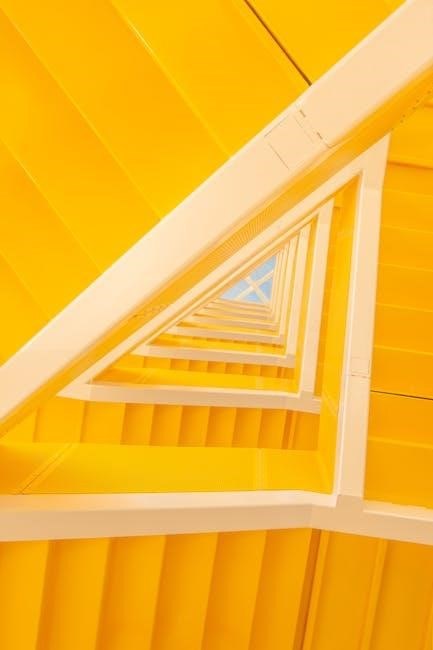
Creating Texture in Watercolor
Texture adds dimension and interest to watercolor paintings․ Achieve it by using salt for speckled effects or spraying water to create soft, irregular patterns․ Dragging wet paint with a brush or tool also adds texture․ Experiment with household items like sponges or fabric for unique effects․ Practice these techniques to enhance elements like tree bark, flowers, or fabrics․ Texture transforms flat areas into dynamic, lifelike scenes, making your art more engaging and visually appealing․ Regular practice will help you master these methods and incorporate texture seamlessly into your watercolor creations․
Understanding Color Theory Basics
Color theory is the foundation of creating harmonious and visually appealing watercolor paintings․ It involves understanding the color wheel, primary and secondary colors, and how warm and cool tones interact․ Learning to mix colors effectively is crucial, as watercolor relies heavily on transparency and layering․ By grasping basic principles like complementary colors and value contrasts, you can enhance your compositions․ Experiment with color combinations to achieve desired moods and effects․ A strong understanding of color theory will elevate your watercolor work and help you create stunning, balanced pieces that captivate the viewer․
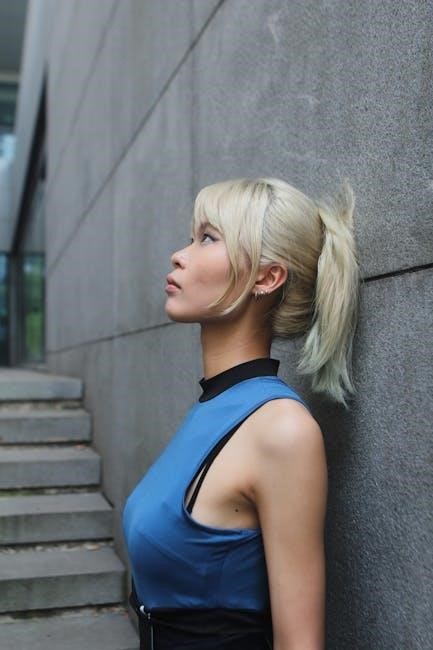
Step-by-Step Painting Process
Start with a sketch, then apply initial washes․ Gradually build layers, blending colors․ Add details last․ Follow these steps to create a beautiful watercolor masterpiece and achieve stunning results․
Starting with a Sketch
Begin your watercolor journey with a simple sketch, the foundation of your artwork․ Use a pencil to lightly outline your subject, whether it’s a butterfly, eyes, or another design․ Keep your sketch basic and precise to ensure clarity․ This step helps you plan composition and proportions․ For beginners, consider tracing a template or using a coloring book for guidance․ Remember, the sketch is a guide, not a final piece․ Take your time to ensure accuracy, as it sets the stage for a smooth painting process․ Practice sketching various subjects to build confidence and skill․
Applying the First Wash
Begin by applying the first wash to establish the base tone and transparency of your painting․ Mix your watercolor with water to achieve a light, fluid consistency․ Gently sweep your brush across the paper, focusing on large areas like skies or backgrounds․ This initial layer sets the foundation for subsequent details․ For subjects like butterflies or eyes, start with soft, delicate washes to capture their ethereal quality․ Allow the first wash to dry completely before adding more layers․ This step is crucial for maintaining clarity and preventing muddiness in your artwork․ Practice this technique to master the essence of watercolor painting․
Building Up Layers
After the first wash dries, begin building up layers to add depth and detail to your painting․ Use progressively darker shades to enhance shapes and forms․ For intricate subjects like butterflies or eyes, apply thin, controlled strokes to refine features․ Allow each layer to dry completely before adding the next to maintain clarity․ This gradual process prevents colors from muddying and ensures vibrant results․ Practice patience and precision when layering to achieve a balanced, harmonious composition․ This step is essential for transforming your initial wash into a detailed, visually appealing watercolor piece․
Adding Details and Finishing Touches
The final step in your watercolor tutorial is adding details and refining your work․ Use a fine brush to enhance small features, such as the veins on butterfly wings or the sparkle in eyes․ Darken specific areas with deeper shades to create contrast and depth․ Allow each layer to dry before adding more details to prevent colors from bleeding․ Pay attention to subtle textures and fine lines to bring your painting to life․ With patience and precision, you’ll transform your piece into a polished, professional-looking watercolor artwork that captures your creative vision․
Practice Exercises
Start with simple watercolor exercises like painting basic shapes and landscapes․ Practice washes, blending, and texture to refine your skills․ Follow step-by-step tutorials for beginners to build confidence and creativity․
Simple Watercolor Exercises for Beginners
Begin your watercolor journey with simple exercises like painting basic shapes and forms․ Start with a butterfly or eye tutorial, following step-by-step guides to practice blending and color control․ Experiment with washes on small sheets to master transparency and flow․ Try creating soft gradients and minimal compositions to build confidence․ These exercises help develop essential skills while keeping the process enjoyable and stress-free․ They are perfect for understanding the medium’s behavior and preparing for more complex projects․
Painting Basic Shapes and Forms
Mastering basic shapes and forms is a foundational step in watercolor painting․ Start by practicing circles, squares, and triangles to improve brush control and precision․ Use light pressure and minimal water to create clean, defined edges․ Gradually experiment with blending colors within these shapes to achieve smooth transitions․ This exercise helps develop your understanding of color consistency and layering․ It also builds confidence in handling the brush and paint․ By focusing on simple forms, you’ll lay a strong foundation for more complex compositions in the future․
Practicing Washes and Blends
Mastering washes and blends is essential for achieving smooth, seamless transitions in watercolor․ Start by creating a flat wash on wet paper, using light strokes to spread the pigment evenly․ Experiment with wet-on-wet and wet-on-dry techniques to observe how colors merge․ Practice blending complementary colors to create soft, gradient-like effects․ Focus on controlling water and pigment ratios to avoid over-saturation․ Regular practice will enhance your ability to layer and mix colors effectively, creating depth and harmony in your paintings․ This exercise is meditative and perfect for refining your technique․
Creating a Simple Watercolor Landscape
Begin by sketching a basic landscape composition, focusing on simplicity for beginners․ Start with a light sky wash, gradating colors from soft blues to warm yellows․ Add distant mountains or hills using cooler tones and soft brushstrokes․ Introduce mid-ground elements like trees or fields with gentle layering․ Finally, define foreground details such as grass or pathways with darker, more concentrated pigments․ Allow each layer to dry before adding finer details․ This step-by-step approach helps build depth and balance, creating a serene and inviting watercolor scene․ Practice this process to refine your skills in capturing natural beauty․
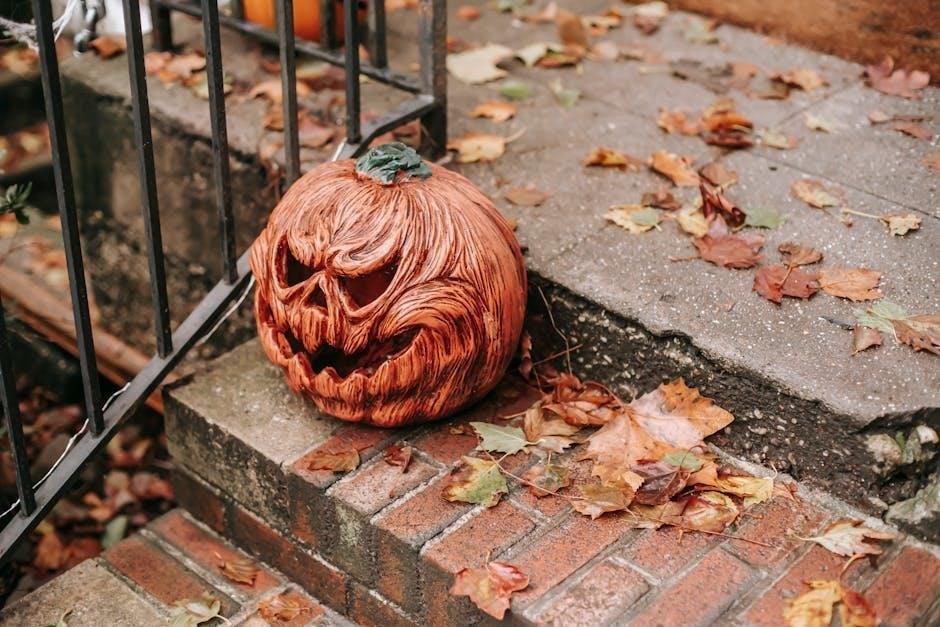
Advanced Techniques
Explore advanced watercolor techniques like glazing, negative painting, and texture creation with salt or spray․ These methods enhance depth and uniqueness in your artwork․
Glazing in Watercolor

Glazing is a sophisticated watercolor technique involving multiple thin, transparent layers to achieve deep, rich colors and luminosity․ It requires patience, as each layer must dry completely before adding the next․ Artists use light-fast pigments to prevent fading and often employ a spray bottle to keep paints moist․ This method is ideal for creating subtle shifts in tone and intricate details․ By layering glazes, painters can build complex, dimensional hues that captivate the eye․ It’s a rewarding process for those willing to master the wait and precision it demands․
Negative Painting Techniques
Negative painting involves creating highlights by painting around a subject, allowing the white of the paper to shine through․ This technique enhances contrast and adds depth to your work․ By carefully layering transparent washes, you can achieve soft, glowing effects․ It’s particularly useful for capturing intricate details and subtle shifts in light․ Negative painting requires patience and precision, as it often means working backwards from the background to the foreground․ This method is ideal for experienced artists looking to add complexity and luminosity to their pieces, as seen in Bailey Rae’s watercolor tutorials․
Using Salt and Spray for Texture
Add unique textures to your watercolor paintings with salt and spray techniques․ Sprinkling salt on wet paint creates intriguing patterns as it absorbs pigment, leaving behind organic, speckled effects․ For a softer look, use a spray bottle to mist water onto damp paint, allowing colors to blend and merge naturally․ These methods enhance the spontaneous beauty of watercolor, making each piece distinct․ Experiment with different salt sizes and spray pressures to achieve varied results․ Perfect for capturing elements like snow, sand, or mist, these techniques add depth and visual interest to your artwork, as seen in Bailey Rae’s creative tutorials․
Advanced Color Mixing Strategies
Elevate your watercolor art with sophisticated color mixing techniques․ Explore glazing by layering transparent washes to achieve deep, rich hues․ Mix complementary colors to create vibrant neutrals, adding complexity to your palette․ Experiment with metallic pigments for luminous effects․ Practice creating harmonious color schemes by limiting your palette or using analogous colors․ For inspiration, study Bailey Rae’s watercolor tutorials, which showcase how to blend colors seamlessly․ Remember, practice is key to mastering these strategies and unlocking endless creative possibilities in your watercolor journey, as seen in her innovative approaches to texture and color blending․
Common Mistakes and Solutions
Avoid over-saturation and rushing layers, as this can muddy colors․ Fix mistakes by lifting pigment with a damp brush or blotting excess water․ Practice patience for better results․
Avoiding Over-Saturation
Over-saturation occurs when too much water or pigment overwhelms the paper, causing colors to muddy or bleed․ To prevent this, use clean water, blot excess with a cloth, and allow layers to dry between washes․ Start with light washes and gradually build depth․ Avoid overworking areas, as this can lead to unwanted texture․ Using the right brush size and testing on scrap paper first can help maintain control․ By balancing water and pigment, you’ll achieve crisp, vibrant results in your watercolor step-by-step tutorial projects․
Fixing Mistakes in Watercolor
Mistakes in watercolor can be corrected with careful techniques․ For unwanted marks, use a clean, damp brush to gently lift pigment before it dries․ If dry, wet the area and blot with a tissue․ Masking fluid can protect areas from accidental paint․ For over-saturation, allow the paper to dry completely before reworking․ Small errors can often be incorporated into the design․ Practice these fixes in your step-by-step tutorial to master watercolor’s unique unpredictability and turn mishaps into creative opportunities;
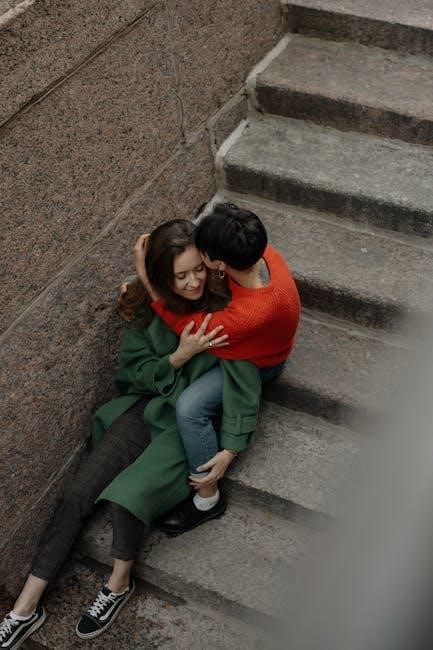
Preventing Bleeding and Buckling
Prevent bleeding and buckling in watercolor by using high-quality materials․ Start with heavy, textured paper designed for watercolor․ Stretch and tape the paper to a board to avoid buckling․ Apply moderate water and pigment, allowing layers to dry between washes․ Avoid over-saturating the paper, as this causes bleeding․ Use masking fluid to protect fine details․ Work in small areas and blot excess moisture with a clean cloth․ These steps ensure a smooth, professional finish in your step-by-step watercolor tutorial, helping you maintain control and achieve desired results․
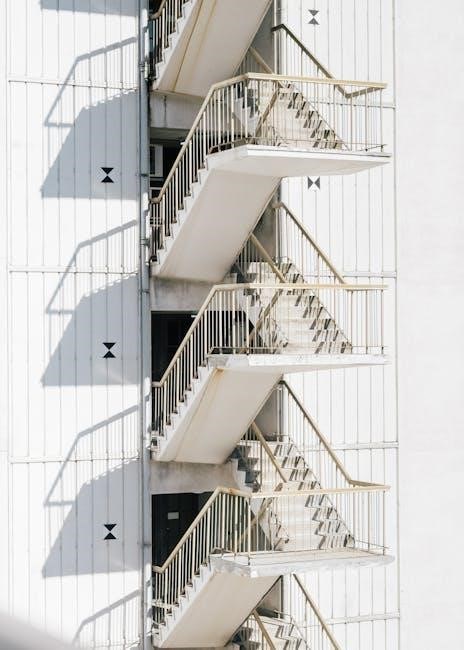
Troubleshooting Color Issues
Resolve color challenges in watercolor by understanding pigment behavior and layering․ If colors appear dull, ensure proper mixing ratios of water and pigment․ Mismatched hues can be corrected by glazing or layering complementary colors․ Test colors on a separate sheet before applying to your main work․ Avoid overmixing, as it can muddy tones․ Use a limited palette to maintain harmony․ If colors bleed unpredictably, allow layers to dry completely․ Practice color theory basics to predict outcomes․ Adjusting your approach step-by-step ensures vibrant, balanced results in your watercolor tutorial, enhancing your artistic expression and control․
Inspiration and Ideas
Find inspiration in nature, tutorials, and personal experiences․ Explore step-by-step guides, like drawing butterflies or eyes, to spark creativity․ Use coloring books or observe surroundings for unique ideas․
Where to Find Inspiration for Watercolor
Inspiration for watercolor painting can be found in nature, online tutorials, and personal experiences․ Explore step-by-step guides, such as drawing butterflies or eyes, to spark creativity․ Utilize watercolor coloring books, like those by Bailey Rae, for structured projects․ Observe your surroundings, from landscapes to everyday objects, to discover unique subjects․ Social media and art communities also offer endless ideas․ Let your imagination flow by experimenting with different techniques and styles, turning simple exercises into meaningful art․
Exploring Different Watercolor Styles
Watercolor painting offers a variety of styles to suit every artist’s preference․ From realistic depictions to abstract expressions, each style provides a unique way to express creativity․ Beginners can start with step-by-step tutorials, such as painting butterflies or eyes, to master basic techniques․ Experiment with minimalist designs or vibrant, layered compositions․ Explore the works of other artists for inspiration and adapt their styles to your own vision․ Whether you prefer delicate washes or bold brushstrokes, watercolor allows endless experimentation, making it a versatile medium for artistic growth and personal expression․
Creating Unique and Personal Art
Unleash your creativity by crafting watercolor art that reflects your personal style․ Start with step-by-step tutorials, like painting butterflies or eyes, to build confidence․ Experiment with techniques such as glazing or negative painting to add depth․ Incorporate meaningful themes or symbols to make your work distinctive․ Draw inspiration from nature, emotions, or personal experiences to infuse authenticity․ Practice regularly to refine your skills and develop a signature style․ Remember, the beauty of watercolor lies in its unpredictability, allowing you to create truly one-of-a-kind pieces that tell your story․
Congratulations on completing the watercolor step-by-step tutorial! Embrace your artistic journey, continue exploring, and enjoy the creative process of watercolor painting ahead․
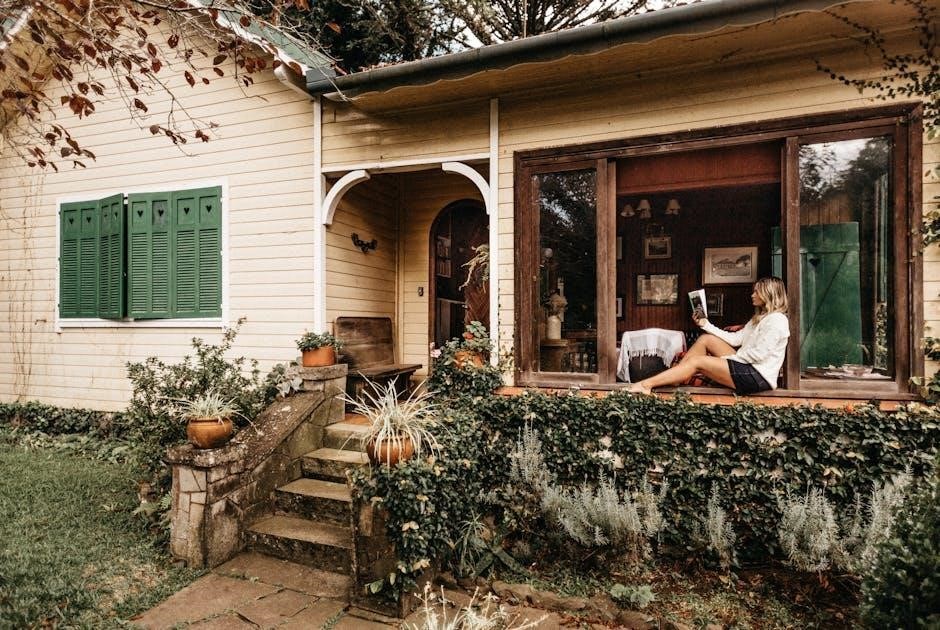
Final Tips for Success in Watercolor
Mastering watercolor requires patience and practice․ Experiment with techniques, colors, and tools to find your unique style․ Start with simple exercises and gradually build complexity․ Observe how water and pigment interact to achieve desired effects․ Stay inspired by nature, reference images, or fellow artists․ Embrace mistakes as learning opportunities and remember, every brushstroke tells a story․ Keep exploring, and most importantly, enjoy the creative journey of watercolor painting!
Encouragement to Keep Practicing
Consistency is key to mastering watercolor painting․ Celebrate small victories, even if your early attempts don’t match your expectations․ Each brushstroke builds skill and confidence․ Embrace the process as a meditative journey, where mistakes become valuable lessons․ Set achievable goals, like dedicating 15 minutes daily to practice․ Experiment with techniques, colors, and tools to keep the process exciting․ Remember, progress takes time, and every piece tells a story․ Stay inspired, learn from tutorials, and enjoy the creative growth that comes with each step․
Sharing Your Art with Others
Sharing your watercolor creations can inspire and connect you with like-minded artists․ Showcase your work on social media platforms or join local art communities to gain feedback and motivation․ Participating in exhibitions or online galleries can also help you reach a wider audience․ Teaching others or collaborating on projects fosters creativity and builds confidence․ Remember, art is a form of expression meant to be shared․ Whether it’s a simple piece or a complex design, your unique perspective deserves to be seen and appreciated by others․